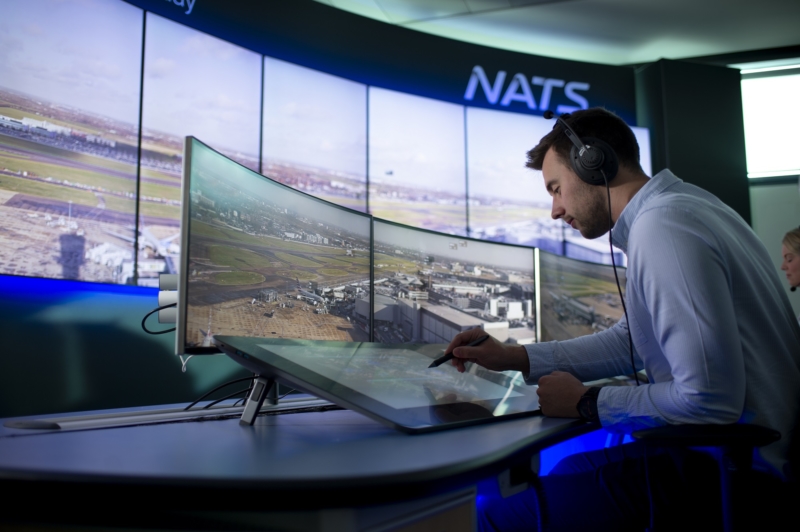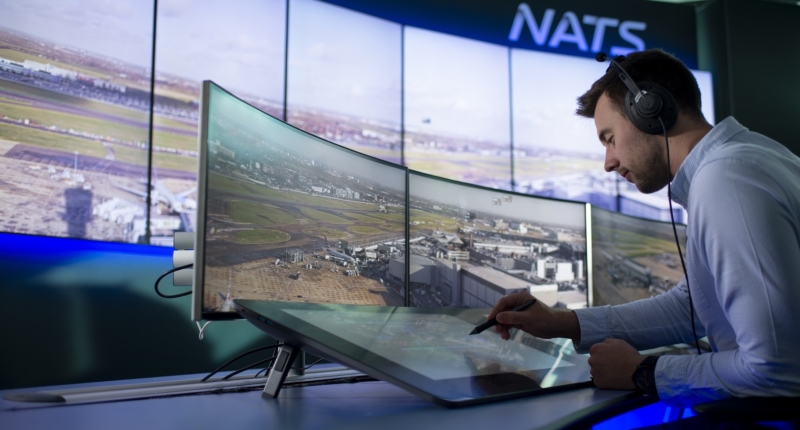You’re on the flight deck, sitting on stand and ready to start engines. You call to the tower to request permission to depart, but what if the clearance you get back doesn’t come from a human air traffic controller, but a computer?
That’s exactly the idea we’ve been testing as part of a research and development project alongside Searidge Technologies.
The team at Searidge are international experts in the application of Artificial Intelligence (AI) to the safety critical world of airport operations, with air traffic controllers around the world already using their tools to help support their decision making and reduce their workload.
Using Searidge’s ‘Aimee’ AI platform, we’ve been experimenting to see if it can be trained to successfully give an aircraft clearance, including being able to interpret and respond to the ‘read back’ from the pilot.
Automated voice clearances are something that the industry has dabbled with in the past, but the technical hurdles have always seemed insurmountable. Not only must the system be able to issue the clearance safely and correctly, but it also needs to be able to understand the pilot’s response and act appropriately.
It’s that ability to interpret ambiguity, which might include the use of non-standard phraseology or accented English (something humans are so good at), that has always been the real barrier to the idea taking off, but the results of our non-operational trials with Aimee have been very encouraging. Likewise, testing the ability for our latest digital tower systems to listen and understand readback is a significant potential in supporting controllers and avoiding readback errors.

The scope of the project was purposely limited to providing departure clearances requested by aircraft while on the ground waiting to commence their journey. This was done using a recorded dataset of real Radio Transmissions (RT) and was focussed on extending the ability of automated datalink clearance delivery to aircraft that are not ‘CPDLC’ equipped or serviceable, but it didn’t extend to any requests for permission to start engines, leave stand or manoeuvring of aircraft.
The concept was that Aimee should interpret the pilot request, check the details against the existing ATC flight strip system and then respond to the pilot with the appropriate clearance or request for clarification. As with the transmissions from the pilot, Aimee would use RT to communicate back to the flight deck. On occasions when AIMEE didn’t recognise the request on first call, a further attempt would be made via a request for the crew to say again, after which the pilot would be instructed to contact the tower.
Our initial aim for the Proof of Concept was to reach a success rate of around 75%, but across all transmissions in the test dataset, Aimee was able to understand the intent and content of the request 83% of the time, rising to 91% for standard clearances and dropping to 86% if the pilot omitted some information.
As with any trial, we should express some caution in the transference of these results into operational performance, but our analysis shows that with the provision of enough training data, Aimee performs very well when responding to pilot RT transmissions.
If the work continues towards achieving producing something that’s one day operationally deployable, it might be possible to either automate some of the more routine tasks controllers undertake, or to use the system to provide support and more effective safety nets by monitoring RT and alerting the controllers to anything untoward.
This would help reduce workload, enhance safety and enable greater focus on critical operational decisions where human skills and training are best employed.
Comments
Please respect our commenting policy and guidelines when posting on this website.




07.07.2022
13:21
Pat
This is absolutely fascinating to me. My IFR clearances are usually simple (single engine) but would love to participate in such an experiment… Well done.
07.07.2022
21:13
Tel
So the AI tool isn’t (As heralded in the headline, to some fanfare) actually issuing takeoff clearances? It’s issuing an airways clearance.
I appreciate that in time, and, no doubt, after obtaining a challenging buy in from the regulator, it *could* end up issuing takeoff clearances, but for now, the headline is more than a little misleading.
07.07.2022
22:42
Chris
Hmm. The headline mentions clearing pilots for take off but the article only mentions pre-departure clearance (SID+SSR code?) issued while the aircraft is still on stand Not quite the same!
12.07.2022
05:08
A Hogg
Slightly misleading title to the article. Aimee is not being tested to give pilots clearance to take off, but in fact it is giving out pre departure clearance…